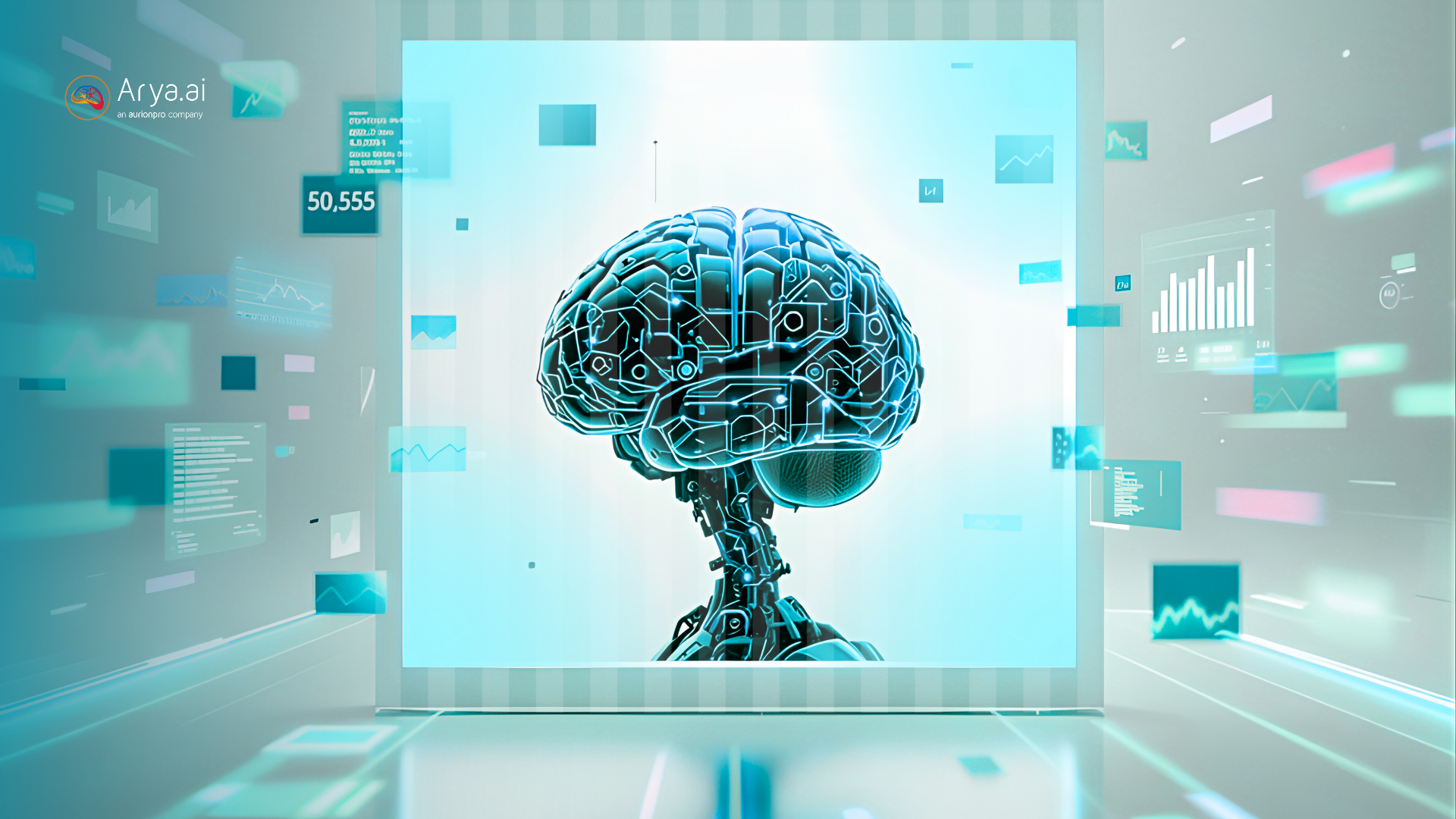
Artificial intelligence has leaped from niche experiments to core business strategy in just a few short years. Business leaders are seeing AI deliver tangible value, from automating routine tasks to uncovering strategic insights in real time.

Key Areas Defining AI in 2025 and Beyond
.jpg)
1. Enterprise AI Becomes Mainstream
Enterprise AI has become mainstream in 2025, with nearly half of technology leaders reporting full AI integration into their core strategy. One-third of companies have embedded AI into their products and services, accelerating innovation and operational efficiency. Even small and medium-sized businesses are leveraging AI, thanks to its democratization and the availability of accessible tools.
Companies that adopt AI strategically gain a significant competitive edge, achieving 20–30% improvements in productivity and speed-to-market. AI-driven analytics uncover insights that humans might miss, enabling real-time decision-making. In sectors like finance and retail, AI-empowered businesses respond faster to market shifts and customer demands, outpacing competitors. Delaying AI adoption risks leaving companies in a perpetual state of catching up.
2. Domain-Specific AI Preferred for Tailored Intelligence
Organizations are increasingly leveraging domain-specific AI models trained on sector-specific data for better accuracy and insights. For example, banks deploy proprietary AI to analyze credit risk using internal data. And companies like the Hong Kong Jockey Club use AI to generate detailed horse racing insights in minutes. Additionally, these models offer enhanced privacy by keeping sensitive data on local servers, reducing reliance on external platforms.
Considering the benefits enterprises are getting from such niche models, we expect rapid growth in this domain that’s similar to microservices in software. We anticipate that enterprises will employ a range of specialized AI agents to form interconnected ecosystems and pave the way for agentic systems.
3. Multi-Modal AI, Already a Reality
Multimodal AI systems now understand and generate text, images, audio, video, and sensor data together. To an extent, multimodal AI mirrors how people perceive the world using multiple senses. For example, audio intelligence helps contact centers analyze audio-based customer interactions for insights.
This means that companies no longer need to employ separate tools for images, texts, or audio. Now, a single AI can combine these data types for comprehensive analysis. Customer interactions are also evolving. Multimodal AI assistants can interpret both spoken instructions and visual input. A customer could show a photo and ask for product recommendations, receiving instant results. This enhances personalization and user experience.
.jpg)
4. AI: A Key Component of Finance
Few industries are experiencing AI's impact as profoundly as finance. In 2025, banks, insurers, and investment firms use AI to automate processes, manage risk, and enhance customer service. McKinsey estimates AI could add $340 billion annually to the banking sector, while Citi predicts a 9% profit boost, nearing $2 trillion.
An Nvidia Report explains how, over the past year, financial services firms have shifted from AI experimentation to deploying high-impact use cases. Data analytics leads the way, powering fraud detection, personalization, and risk management, while generative AI has seen the fastest growth, now used or assessed by over 50% of firms.

Furthermore, Autonomous finance is on the rise. AI chatbots handle customer service, predictive systems forecast cash flows with AI, and fraud detection algorithms monitor transactions in real time. Nearly half of finance CFOs plan to implement AI in customer service tools within 12–18 months, while AI adoption in fraud prevention is growing rapidly.
Read More: The CFO’s Playbook – Harnessing AI to Stay Competitive
5. AI Agents & Multi-Agent Systems
AI agents are one of the hottest topics in 2025. These autonomous software entities make decisions and perform tasks, from simple duties like scheduling to complex problem-solving like diagnosing network outages. The shift is fueled by increasing specialization and the emergence of multi-agent systems where AI agents collaborate on tasks.
Read More: AI Agents in Finance: Applications And Examples
Moreover, tech firms are embedding AI agents into software ecosystems. Microsoft 365’s Copilot features facilitator agents for meetings and self-help agents for IT and HR support. Translation agents provide real-time multilingual communication.
Multi-agent AI can revolutionize business operations. Insurance claims, for instance, could be processed overnight with agents extracting data, verifying policies, and detecting fraud. Businesses will tackle previously overwhelming projects with AI agents handling complex, data-heavy work..
6. AI as a Software Development Tool
AI is already transforming software development by acting as a coding assistant and efficiency booster. AI tools like GitHub Copilot are widely adopted, with over 1.3 million paid users contributing to nearly 50% of code written on the platform. AI accelerates development by auto-completing code, suggesting functions, and catching bugs in real-time.
Beyond writing code, AI assists with reviewing, debugging, and generating unit tests. Developers can provide diagrams or descriptions for AI to translate into functional code. AI also aids in design decisions, recommending tech stacks and detecting performance bottlenecks.

Companies using AI report faster time-to-market and reduced development costs. For example, Wayfair achieved a 55% faster setup of development environments with AI support. PwC estimates AI can cut product development cycles in half for industries like automotive and aerospace.
AI enhances productivity, reduces errors, and lowers technical debt by refactoring old code. Less-experienced developers benefit from AI’s recommendations, producing code comparable to senior engineers. Businesses gain a competitive edge by delivering higher-quality products faster.
7. AGI, An Eventuality
In 2025, the quest for Artificial General Intelligence (AGI) remains a central topic in AI discussions. While we haven't achieved true AGI, opinions are shifting. Experts like Brian Weaves argue that today’s AI systems, surpassing human performance in narrow domains, might already qualify as early AGI by previous standards. OpenAI’s recent models, like “o3,” scored 87% on the ARC-AGI evaluation, a massive leap from 5% in 2019.

The debate continues, with many researchers emphasizing the absence of a robust general understanding in AI. However, progress is undeniable. AI models now tackle complex tasks like answering PhD-level questions, while companies like OpenAI, Google, and Anthropic focus on building safer, smarter AI. AI’s learning methods are also evolving – techniques like self-critique and ensemble modeling are pushing boundaries.
Read more – LLM Bubble: Revolutionary Potential or Inflated Hype?
Near-AGI systems have the potential to revolutionize industries. AI could soon handle R&D, strategic planning, and complex decision-making. Imagine AI analyzing vast datasets to optimize department operations or generate innovative product ideas. Companies that embrace these capabilities can unlock unprecedented productivity and competitive advantages.
Yet, risks remain. Businesses must establish robust governance to align AI decisions with ethical standards and organizational goals. Additionally, leaders should proactively assess the evolving workforce landscape. While AI augments human abilities, the potential for job displacement demands careful planning and upskilling initiatives.
Experts anticipate encountering proto-AGI systems in the coming years. Rather than self-aware AI, we may see AI acting as an advanced collaborator, performing cross-domain tasks with human-like flexibility. Preparing for this shift means fostering agility within organizations. Companies that stay informed and adaptive will thrive in an era where AI transforms industries, blurring the line between artificial and human intelligence.
Key Takeaways for Business Leaders
.jpg)
- Enterprise AI is here to stay: Companies across industries are embedding AI into their core strategy and operations. Those who leverage AI early (and responsibly) will gain competitive advantages in efficiency, innovation, and agility
- Customize and collaborate: The trend is toward domain-specific AI models tailored to your business needs and workflows, where humans and AI agents work in tandem. Invest in training your people to work with AI, not fear it, and consider developing AI tuned to your proprietary data for the best results
- Embrace multimodal and multi-agent capabilities: New AI systems can juggle text, images, and more, providing richer insights, while swarms of AI agents can automate complex tasks. These aren’t sci-fi ideas but practical tools emerging now – start piloting them in areas like customer service, IT, or data analysis.
- Focus on responsible and sustainable AI: As you integrate AI, ensure you have frameworks for ethical use, bias mitigation, and energy efficiency. AI should advance your business goals and align with your values and sustainability commitments. Remember that ROI from AI depends on trust and responsible deployment
- Stay adaptive: AI in 2025 is a rapidly moving target. Keep an eye on breakthroughs in general AI capabilities and transformative applications in your sector. Build flexibility into your strategy – be ready to pivot as AI opens up new opportunities or disrupts existing models. The companies that treat AI as a continuous journey (not a one-off project) will be the ones leading “beyond the hype” and reaping the rewards in the years to come.





.png)





.png)




.png)
.svg)


